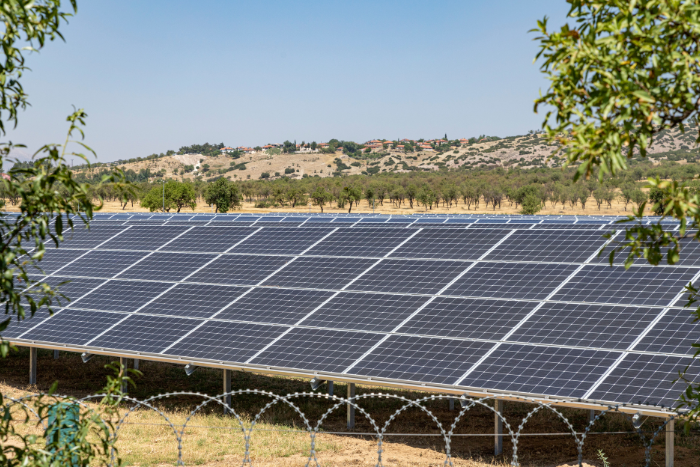To prevent disruptions, the supply chain for components needs to be more geographically diverse for countries to transition away from fossil fuels and toward cleaner energies like solar power, officials said during a conference on solar energy in New Delhi. Right now, 75% of components needed for solar power are manufactured in China, reported the International Energy Agency. The International Solar Alliance (ISA) led by India and France and followed by 110 member countries, wants the supply chain to be diverse.
Solar energy prices are reducing but freight prices are rising. ISA director Ajay Mathur said that to ensure that more nations benefit from the cheap prices of solar energy, multiple regions from which solar photovoltaic products can go from the producer to the supplier. The IEA said although China contributed to a cost decline of more than 80%, helping solar photovoltaics become the most affordable electricity generation technology globally, the country has also led to supply-demand imbalances.
India projected to add 35-40 GW of renewable energy capacity annually to FY 2029/30
There are renewed efforts to expand domestic coal energy in India, but the country’s renewable energy capacity is projected to surge with 35-40 GW per annum by FY 2029/30, while thermal power will lose share, according to IEEFA.
According to the report, India is projected to surpass its 2030 target of 50% generation from non-fossil fuel sources supported by renewable energy commitments from industry players and various potential demand- and supply-side triggers. The expanding use of domestically produced thermal energy amid the Ukraine war is likely to be a “short-term hiccup”, the report said.
In the utility-scale segment, the combined additional capacity targets through 2030 by some of the top players operating in the industry stand at ~231 GW. This includes commitments by state-owned NTPC at 60 GW, Adani Green Energy at 45 GW and Tata Power, ReNew Power and Acme Solar at 25 GW each.
In June 2022, India announced a green hydrogen target of 5 million tonnes per annum (MTPA) by 2030. The report said the target will require additional renewable energy capacity of ~118GW.
Centre issue draft norms for repowering policy for wind turbines
The government issued a revised draft for National Repowering Policy for Wind Power Projects as most of the old wind power projects with sub-megawatt scale wind turbines are yet to be repowered. The government press release said that the repowering policy is being carried out for optimum utilisation of wind energy resources by maximising energy yield per sq km of the project area on shore. Representations from “various stakeholders” were included while redrafting the policy. Wind turbines below capacity of 2MW, turbines that have completed their design life and a set of existing wind turbines over an area will be considered eligible for repowering, reported ET.
Turbine sets up new 24-hour wind power world record
The Spanish-German giant Siemens Gamesa’s 14-222 DD offshore wind turbine prototype set a world record for the most power output by a single wind turbine in a 24-hour period— 359 megawatt-hours. The company said this would be enough energy for Tesla Model 3—to drive around 1.12 million miles (1.8 million km). The SG 14-222 DD is a 14 megawatt (MW) offshore wind turbine with a capacity of up to 15 MW with Power Boost.
According to the company, it features a 222-metre (728 feet) diameter rotor, 108-metre (354 feet) B108 blades that are cast in a single piece and can now be recycled, and a swept area of 39,000 square metres (419,792 square feet). The SG 14-222 DD delivers more than 25% (annual energy production) AEP compared to its predecessor.
Record solar, wind energy production saves Europe 11 billion euros of natural gas
The impact of soaring energy prices in Europe post the Ukraine war has been tempered somewhat by record renewable energy production this year, mainly wind and solar power, reported energy and climate policy think-tanks Ember and E3G. According to the report covered by Fortune magazine, between March and September 2022, wind and solar were ramped up to provide 24% of the EU’s electricity, up from 21% over the same period last year. According to Ember and E3G, the increased production has saved the bloc the equivalent of 8 billion cubic metres of natural gas imports compared with the same period last year, worth around €11 billion ($10.8 billion). Total renewable energy production in Europe during this period is worth the equivalent of €99 billion in natural gas imports.
According to the research, Poland marked the highest spike in solar and wind generation compared with last year, around 48%, while Spain saw the greatest absolute increase in electricity generated from the two sources. The report estimated that if Spain had used natural gas to generate the electricity solar and wind have produced in the country since March, it would have cost €1.7 billion in imports. 19 of the 27 EU member states—including France, Italy, and Spain—hit individual records for solar and wind power generation.
About The Author
You may also like
World, led by China, added 50% more RE capacity in 2023 than in 2022: IEA report
Renewables, not coal, the energy of choice for investors in India for second year in a row: Report
Hope to raise $50 million for solar in next few months; focus on Africa: ISA chief
About 6 lakh new technicians needed globally for wind energy sector by 2027: Report
12% of global growth in solar generation in first half of 2023 came from India: Report


